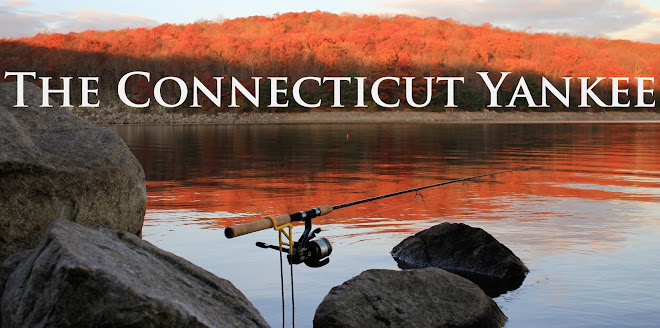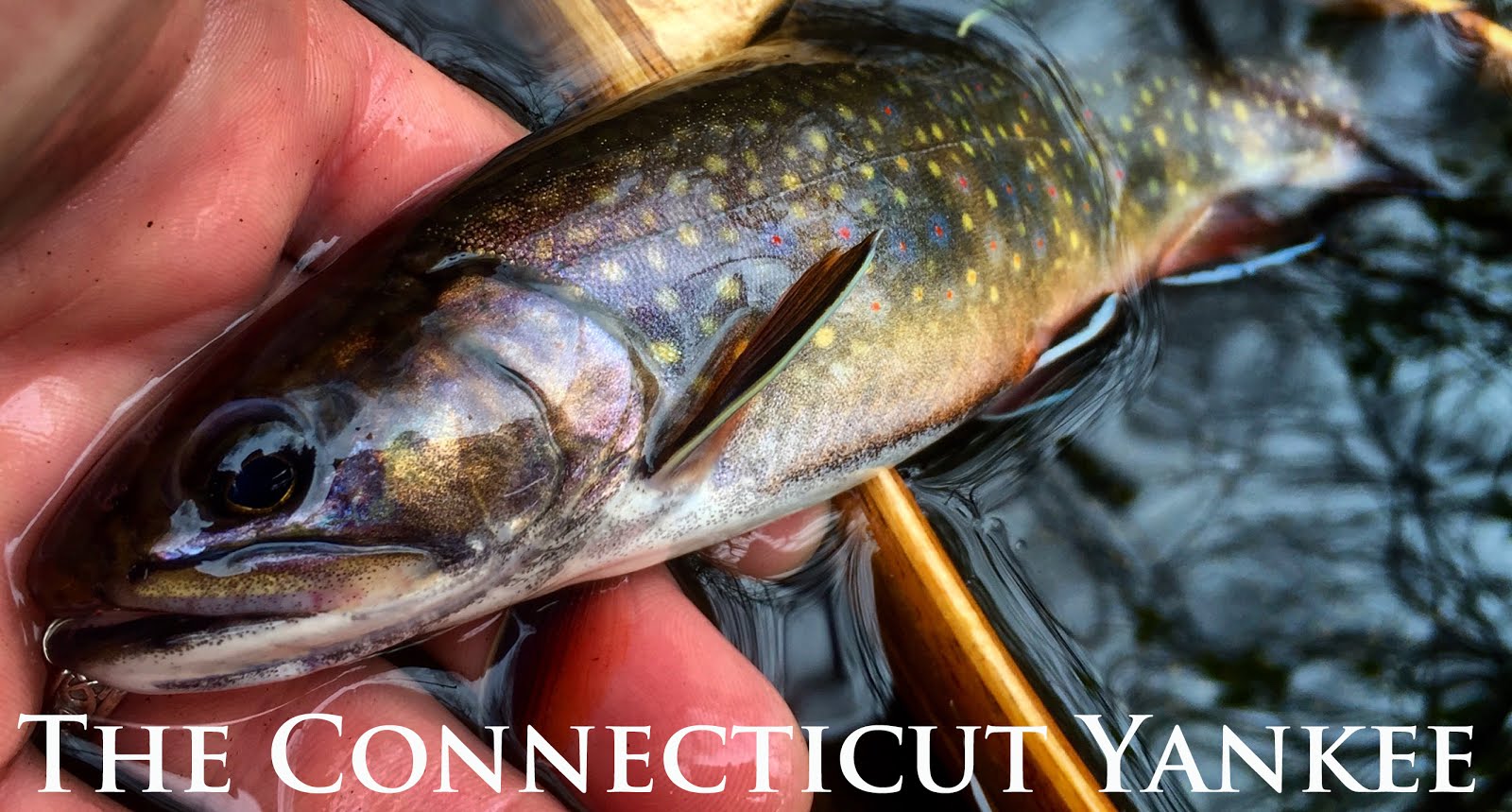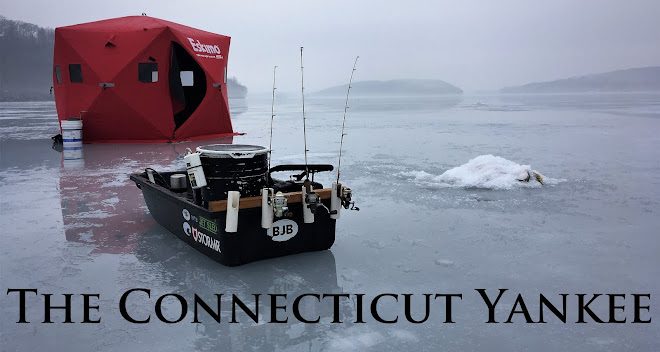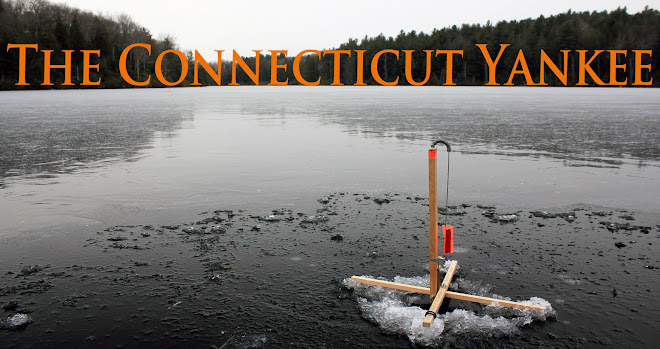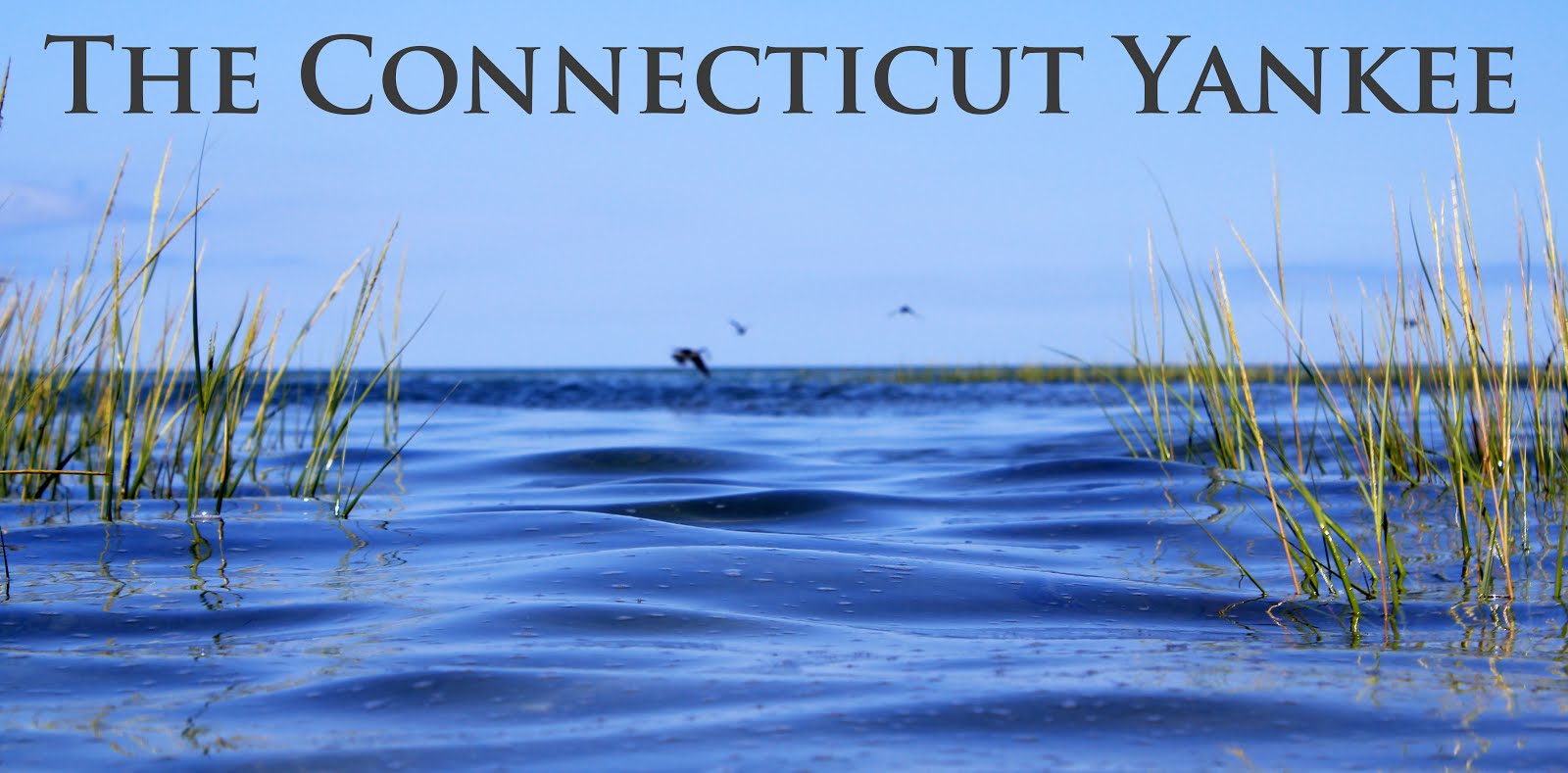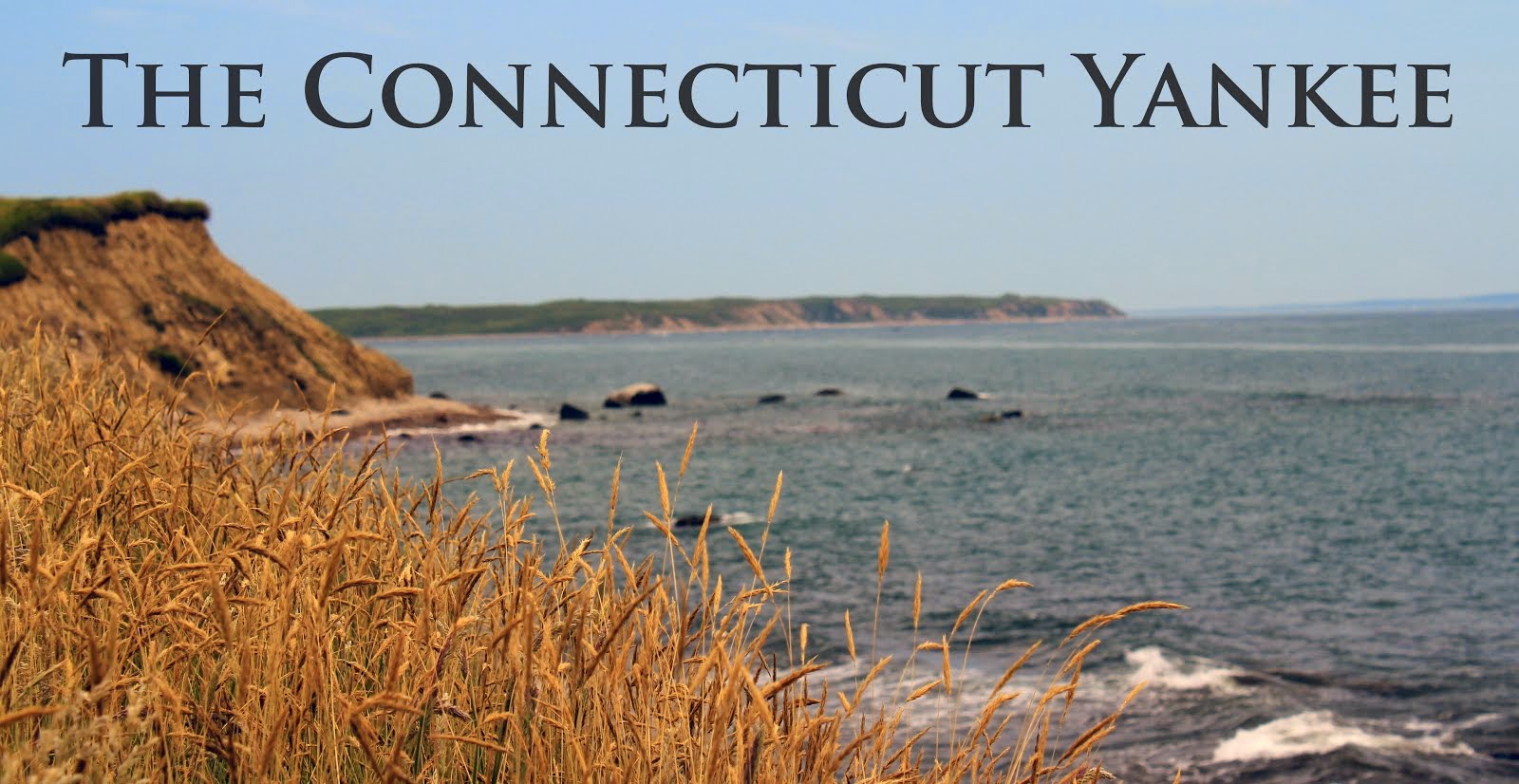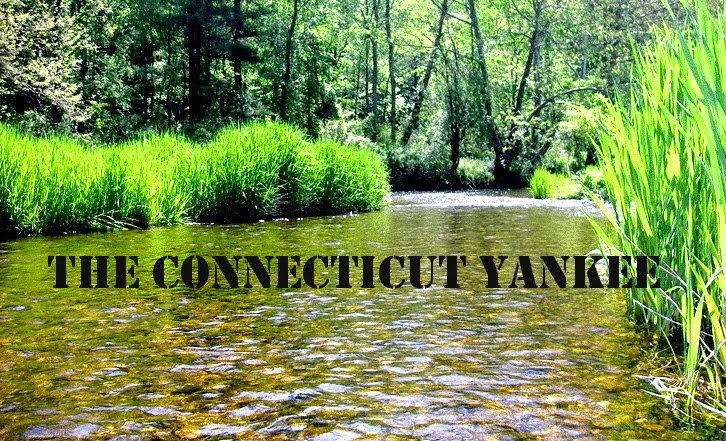For the second consecutive trip,
the morning bite was hotter than two hamsters farting in a wool sock. The type
of bait and whether it was alive or dead didn’t matter; the pike were hungry
and far from shy. Flags were popping all over our spread, but particularly
along a weed line that ran perpendicular to shore. I had just released a small
pike and was rebaiting the tip-up it stripped when I heard something hit the
ice. I couldn’t immediately place the noise, so I scanned the direction it came
from and noticed about 50 yards away the rod in my I Fish Pro was missing from view.
Over the past few years, these
contraptions have helped modernize the way ice anglers catch fish with tip-ups
by allowing anglers to retrieve fish using a rod and reel, instead of the traditional
hand-over-hand technique. They were invented in Canada and popularized by
YouTube channels like Uncut Angling, Jay Siemens,
and Clayton Schick Outdoors. In Connecticut, where ice anglers can fish with up to six
lines, it’s impractical to use just I Fish Pros, but friends and I have added a
few to our line-up and it’s been a hell of a lot of fun.
When it fully registered that that
the sound I heard was my rod falling, I broke into the highest gear
one can travel in Yaktrax across ice. A pike had taken my bait and the stiff
wind had wrapped my bowed line around the tripped flag of the I Fish Pro. The
fact that my conventional reel was in free spool didn’t matter; when the fish
began to pull the fouled line, the rod jolted from its holder and was gradually
towed toward the hole in the ice.
From a few yards out, like the
scene in Sandlot where Benny steals
home, I slid on my side and scooped up the dragging rod that was inches from disappearing.
With some luck, I freed the braided line from the flag and kept the fish tight
in the process. That kicked-off an eventful fight consisting of me dancing
around the hole to achieve favorable angles while the pike peeled drag and
changed directions like a warplane in a dogfight.
By this point, one of my friends
watching the spectacle unfold ran over to assist. After a valiant effort, the
pike began to tire and its jaws emerged upward from the icy water. Aaron placed
his hand under its gill plate and hoisted up a very well-fed northern pike. Sporting
beautiful dark colors and a big head and shoulders, it was my best pike of the ice
season and my largest ever taken on a rod and reel.
A couple of seconds was all the
difference between me landing that fish and losing an expensive combo in a
frozen lake. A lesson was learned about the need to be more cognizant of wind
direction when setting the I Fish Pro, but that awesome fight and fish further
cemented the tip-up’s place in my hardwater rotation. Thankfully things turned
out how they did and I have noteworthy memory that will always be tied to that morning
on the ice.
 |
| Photo credit: Aaron Swanson |



















.jpg)

